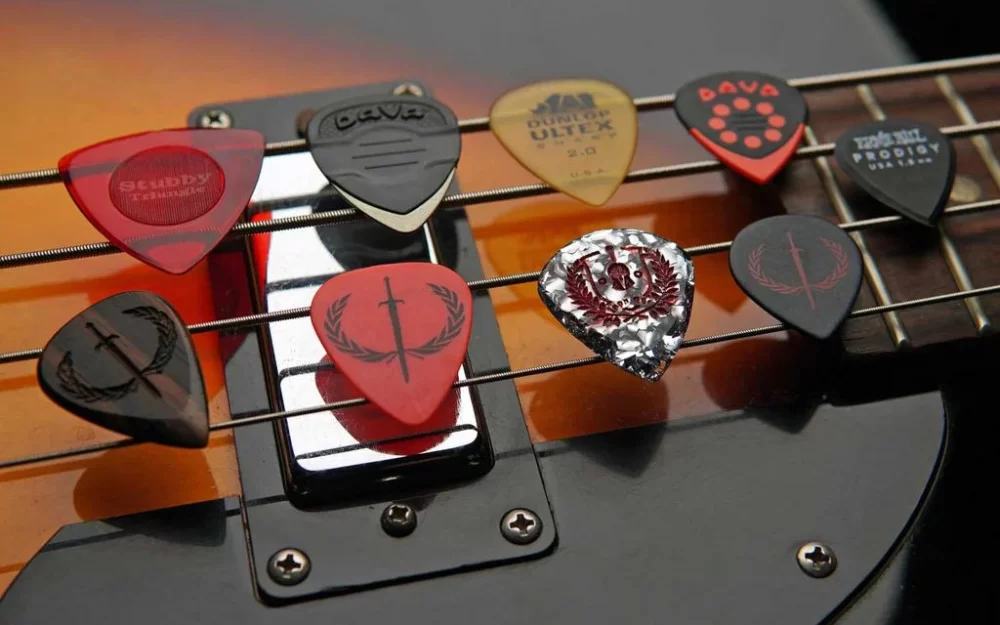
How to Select the Best Guitar Pick for Your Style
When I first started playing guitar, I had no idea how important the pick was to my sound. It wasn't until I started experimenting with different picks that I realized just how much of a difference it can make to my playing. The right pick can enhance your tone, improve your speed, and even change the way your guitar feels. Whether you're just starting out or you're a seasoned guitarist, choosing the right pick for your style is crucial.
1. Understanding Guitar Pick Materials
There are a lot of different materials used for guitar picks, and each one can produce a unique sound. The most common materials include plastic, nylon, celluloid, tortex, and even metal. If you're like me, you'll quickly realize that the material you choose can affect the attack, tone, and feel of the pick.
For example, plastic picks tend to offer a smoother sound, while nylon picks are great for more control and flexibility. If you're a metal player, you might prefer a more rigid material like tortex, which provides more precision for fast riffs and heavy strumming. The material you choose should align with your playing style and the tone you're after.
2. The Thickness of the Guitar Pick
Another key factor when selecting a pick is its thickness. I used to think that all guitar picks were the same, but over time, I realized that thickness plays a major role in shaping the tone and feel of the guitar. Guitar picks come in a variety of thicknesses, usually ranging from thin (around 0.38mm) to heavy (1.5mm or more).
If you're playing soft strumming or rhythm guitar, you may want a thinner pick (0.5mm to 0.7mm), which gives a lighter feel and can produce a bright, sharp tone. On the other hand, if you're playing solos or aggressive styles like rock and metal, a thicker pick (1.0mm and above) provides more control and can handle the heavy picking required for fast and precise solos.
3. Shape and Size: The Perfect Fit for Your Hand
The shape and size of a pick can significantly affect how comfortable it feels in your hand. There are a variety of shapes, from the standard triangular pick to teardrop and even custom shapes. Personally, I prefer a teardrop pick for its versatility and comfortable grip, but it’s important to experiment to see what works best for you.
The size of the pick also impacts how much surface area of the pick is in contact with the strings. A larger pick offers more control, while a smaller pick gives you more precision and allows for faster movement. If you're playing in a style like fingerpicking, you might find that a smaller, more delicate pick feels better and allows you to pick individual strings with greater accuracy.
4. The Role of the Guitar Pick in Different Styles
Each style of guitar playing requires a different approach to pick selection. For example, if you're into acoustic fingerstyle, you'll likely prefer a lighter, thinner pick that allows for subtle, nuanced strumming and picking. If you're into heavy metal or shredding, you’ll want a pick with a heavier thickness to ensure your notes come out clean, even at high speeds.
When I first switched to playing jazz, I found that a medium-thick pick (around 0.8mm) worked wonders for both rhythm and lead parts. Jazz requires a lot of smooth picking, and the medium thickness of the pick allowed me to produce a warm tone with a bit of flexibility for fast lines. In contrast, players of genres like punk or rock will often prefer a stiffer pick that can handle aggressive strumming and heavy riffing.
5. Experimenting and Finding Your Style
At the end of the day, there’s no "one-size-fits-all" when it comes to selecting a guitar pick. The best way to find the perfect pick for your style is to experiment. I remember spending hours trying out different picks, from the soft, flexible nylon ones to the rigid, thick tortex picks. Each one made my guitar sound slightly different, and I found myself gravitating toward the ones that complemented my playing the most.
When I first started, I thought I needed a certain pick to sound like my guitar idols. But over time, I discovered that the pick that felt most natural in my hand and suited my playing style was the one that made the biggest difference. I recommend trying out a variety of picks, paying attention to how they feel in your hand and how they affect your tone.
6. Maintenance and Care of Your Guitar Pick
While guitar picks are relatively low-maintenance, it’s important to take care of them to ensure they last longer. Picks made of softer materials, like nylon or plastic, can wear down over time, affecting their sound and performance. If you’re playing heavily, you might notice that your pick wears down faster, especially with thick picks that are used for fast strumming.
One way I’ve kept my picks in good shape is by storing them in a pick holder or a small pouch. This prevents them from getting lost or scratched. Also, regularly cleaning your pick can help preserve its grip and surface, especially if you're playing for extended periods. It may seem like a small detail, but taking care of your pick can enhance your overall playing experience.
7. Conclusion: The Journey of Finding Your Ideal Guitar Pick
The journey to finding the perfect guitar pick is personal and unique for every player. There’s no right or wrong choice, just what feels right for you and your style. Whether you’re into rock, jazz, metal, or acoustic, experimenting with different picks will help you discover the sound and comfort you need for your playing. Don’t be afraid to try new things, and most importantly, have fun with the process of exploring different picks and sounds.








